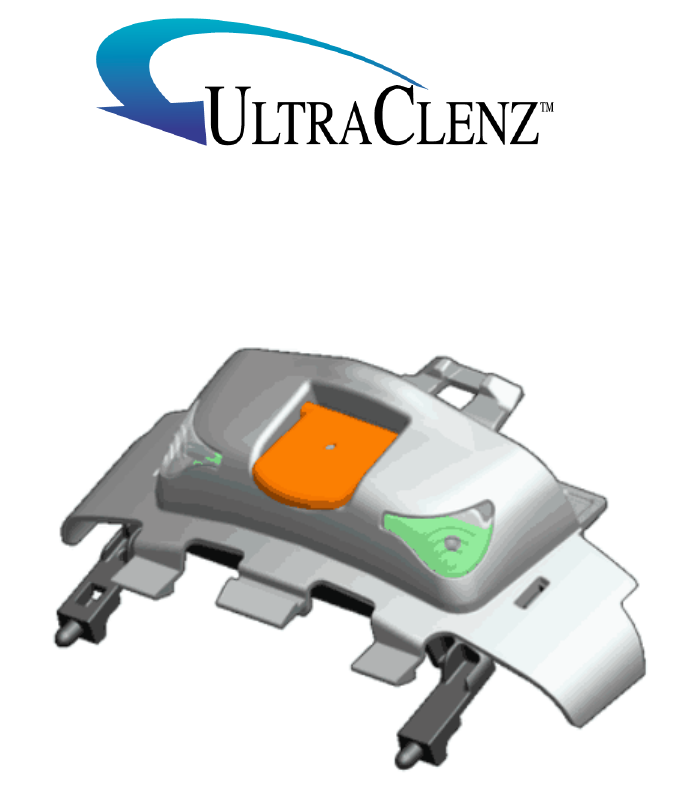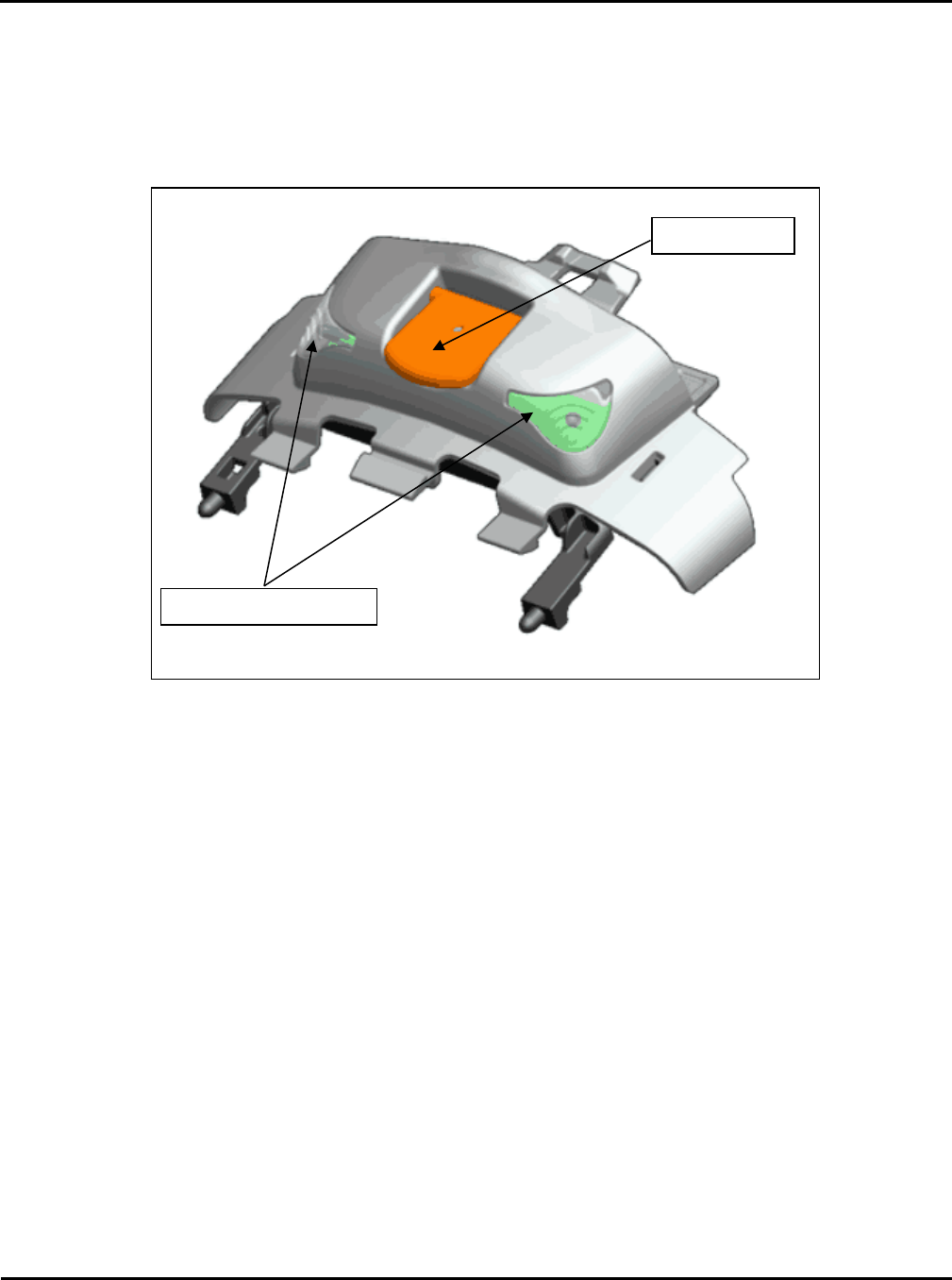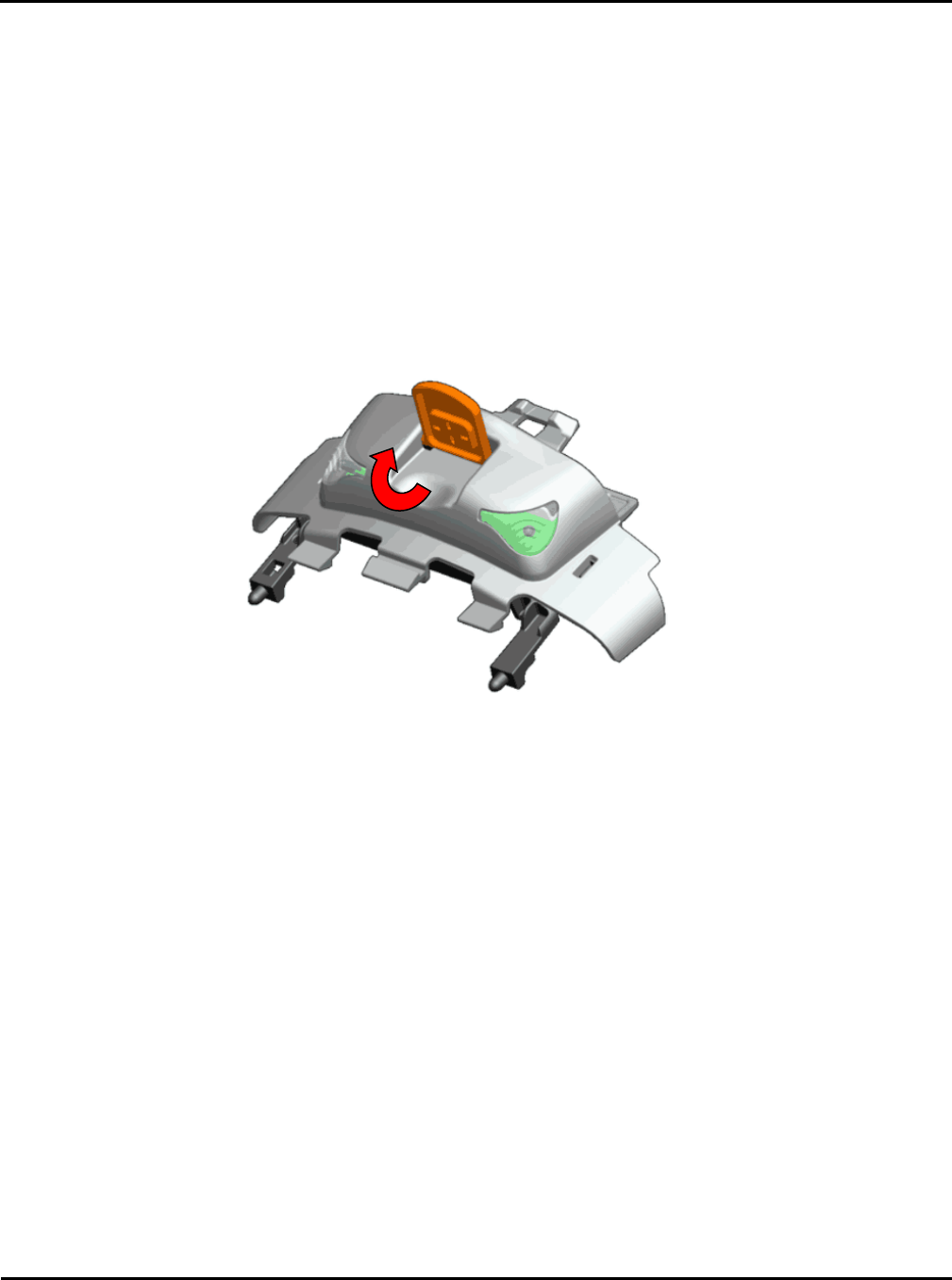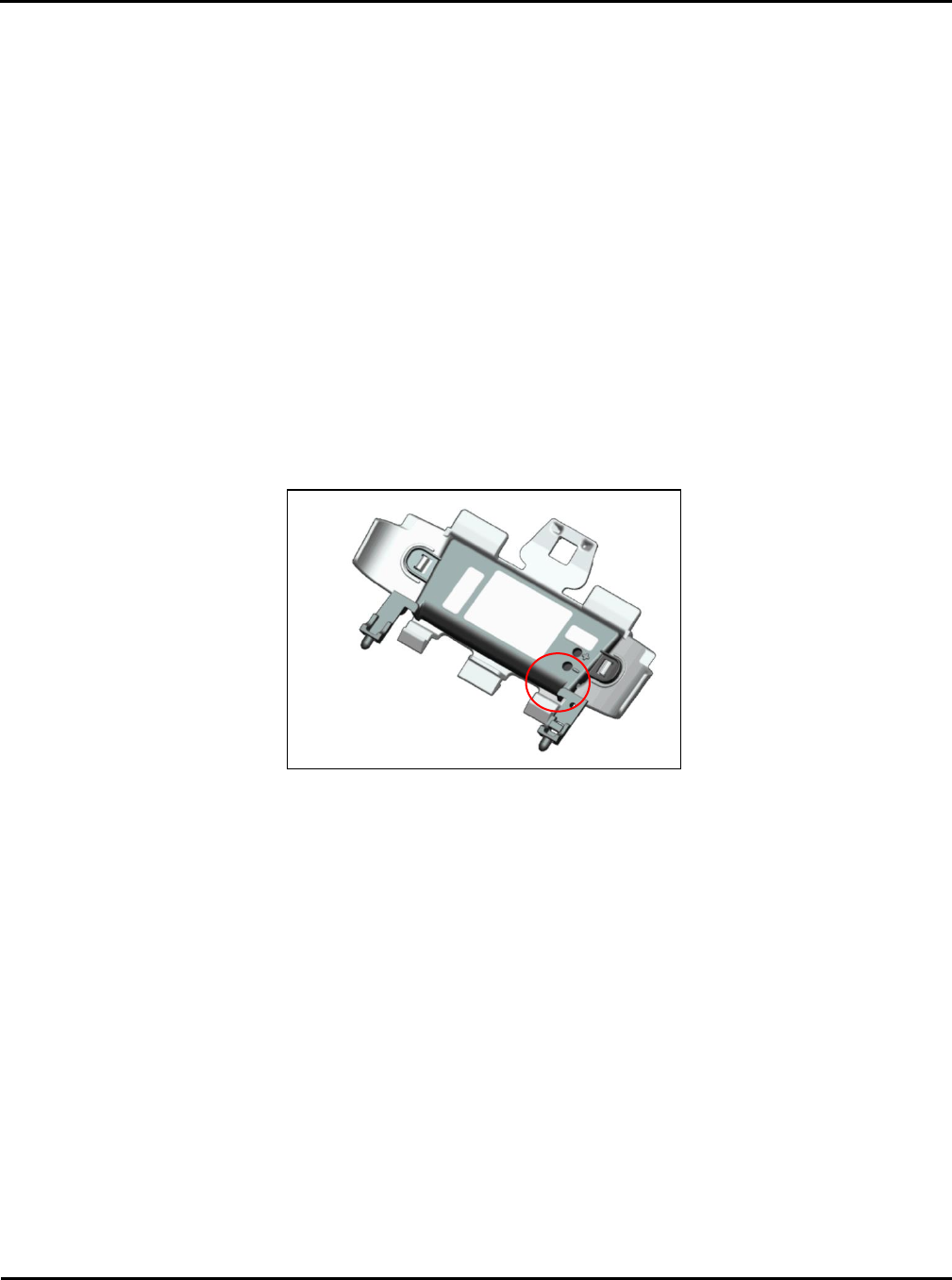Ecolab FAS1533 Smart Link Dispenser Beacon Module User Manual FCC Part 15
UltraClenz LLC. Smart Link Dispenser Beacon Module FCC Part 15
Ecolab >
Manual

Certification Exhibit
FCC ID: Z9O-FAS1533
IC: 10060A-FAS1533
FCC Rule Part: 15.209, 15.231, 15.249
IC Radio Standards Specification: RSS-210
ACS Project: 13-2145
Manufacturer: UltraClenz, LLC
Models: FAS1533-00, FAS1533-01,
FAS1533-02, FAS1533-03
User Manual
3998 FAU Blvd. Suite 310 Boca Raton, FL 33431 Tel: 561-961-5585 Fax: 561-961-5587

FAS1533 Smart Link Dispenser Beacon Module
User's Guide
Revision 2
04/08/14
UltraClenz, LLC

FAS1533 User's Guide UltraClenz, LLC
Page 1
Table of Contents
Revision History .......................................................................................................................................................2
1.0 Purpose ...............................................................................................................................................................3
2.0 Applying Power..................................................................................................................................................3
2.1 Procedure .........................................................................................................................................................3
3.0 Service Flag .........................................................................................................................................................4
3.1 Purpose ............................................................................................................................................................4
3.2 Procedure .........................................................................................................................................................4
4.0 Range Buttons ....................................................................................................................................................4
4.1 Purpose ............................................................................................................................................................4
4.2 Procedure .........................................................................................................................................................5
5.0 Event Activation..................................................................................................................................................5
5.1 Procedure with a Badge ...................................................................................................................................5
5.2 Procedure without a Badge ..............................................................................................................................5
Appendix A – FCC and Industry Canada Statements ...........................................................................................6
Class B Devices: ....................................................................................................................................................6
RF Exposure ..........................................................................................................................................................6
Industry Canada Statements: .................................................................................................................................6

FAS1533 User's Guide UltraClenz, LLC
Page 2
Revision History
Revision
Date
By
Description
0
11/22/13
JH
Initial Release
1
01/16/14
JH
Changed title and changed the purpose
2
04/08/14
AP
Add Appendix A

FAS1533 User's Guide UltraClenz, LLC
Page 3
1.0 Purpose
To explain how the FAS1533 functions. The detailed procedures demonstrate how the led's,
service flag, range switches and dispense activation work.
2.0 Applying Power
2.1 Procedure
1. The dispenser power is disabled to prevent the phono jack contacts from the shorting
out the gearbox.
2. Insert the phono jack and verify the connection is fully engaged.
3. If a Patient Safeguard Badge (PSS) is within the low frequency field (approximately 24"
or 61cm) the FAS1533 will detect the badge and alternately flash the blue led's twice.
This is a firmware power reset and brownout condition that will only happen on the first
time power is applied. The power cycle will transmit ( via the high frequency - PCB8001
tag) as an activation along with the detected badge address.
If there is no badge present the power cycle will transmit ( via the high frequency -
PCB8001 tag) as an activation and no badge address will be displayed (00,00,00,00).
Blue Indicator Led's
Fig.1 - FAS1533 Compact Dispenser Beacon
Service Flag

FAS1533 User's Guide UltraClenz, LLC
Page 4
3.0 Service Flag
3.1 Purpose
The service flag is used to indicate the dispenser needs a replacement cartridge. When
the service flag is moved from the down (resting)position to the up (latched)
position (seeFig.2),the replace cartridge bit will be set and transmitted on the next
heartbeat message. When the attendant has replaced the cartridge the service flag will
be returned to the down position the replace cartridge bit will be cleared and
transmitted on the next heartbeat.
3.2 Procedure
1. Apply power to the FAS1533.
2. Move the service flag from the down to the latched up position.
3. Both led's will flash twice.
4. Wait a few seconds.
5. Move the service flag from the up position to the down.
6. Both led's will flash once.
4.0 Range Buttons
4.1 Purpose
The purpose of the Range switches is to increase (+) or decrease (-) the low
frequency communications distance between the dispenser beacon and badge.
Fig.2 - Service Flag Latched in the Up Position

FAS1533 User's Guide UltraClenz, LLC
Page 5
4.2 Procedure
1. Apply power to the dispenser beacon
2. Push and release the + range switch four times
3. The blue led will flash once with each activation
4. Push and release the + range switch once (fifth position)
5. The led will flash twice indicating the range is set to maximum. If this does not
occur depress both the + and - simultaneously to set to factory default . The blue
led will flash 4 times to indicate factory default range. Test again.
6. Push and release the - range switch four times
7. The blue led will flash once with each activation
8. Push and release the - range switch once (fifth position)
9. The led will flash twice indicating the range is set to maximum. If this does not
occur depress both the + and - simultaneously to set to factory default . The blue
led will flash 4 times to indicate factory default range. Test again.
5.0 Event Activation
5.1 Procedure with a Badge
1. Apply power
2. Place a test badge 24" or 61 cm or less near the beacon
3. Trigger a dispense event on the phono jack
4. The blue led's will alternate twice indicating a badge was detected
5. The event will be transmitted with the badge address
5.2 Procedure without a Badge
1. Apply power
2. Trigger a dispense event on the phono jack
3. The blue led's not light
4. The event will be transmitted without a badge address
Fig.3 - Range Switches

FAS1533 User's Guide UltraClenz, LLC
Page 6
Appendix A – FCC and Industry Canada Statements
Warning: Changes or modifications to this device not expressly approved by UltraClenz,
LLC could void the user’s authority to operate the equipment.
Class B Devices:
“NOTE: This equipment has been tested and found to comply with the limits for a Class B
digital device, pursuant to Part 15 of the FCC Rules. These limits are designed to provide
reasonable protection against harmful interference in a residential installation. This equipment
generates, uses, and can radiate radio frequency energy and, if not installed and used in
accordance with the instructions, may cause harmful interference to radio communications.
However, there is no guarantee that interference will not occur in a particular installation. If this
equipment does cause harmful interference to radio or television reception, which can be
determined by turning the equipment off and on, the user is encouraged to try to correct the
interference by one or more of the following measures:
• Reorient or relocate the receiving antenna.
• Increase the separation between the equipment and receiver.
• Connect the equipment into an outlet on a circuit different from that to which the receiver
is connected.
• Consult the dealer or an experienced radio/TV technician for help.”
RF Exposure
“This equipment complies with FCC radiation exposure limits set forth for an uncontrolled
environment. This equipment should be installed and operated with minimum distance 20cm
between the radiator and your body. This transmitter must not be co-located or operating in
conjunction with any other antenna or transmitter.”
Industry Canada Statements:
Under Industry Canada regulations, this radio transmitter may only operate using an antenna
of a type and maximum (or lesser) gain approved for the transmitter by Industry Canada. To
reduce potential radio interference to other users, the antenna type and its gain should be so
chosen that the equivalent isotropically radiated power (e.i.r.p.) is not more than that
necessary for successful communication.
Conformément à la réglementation d'Industrie Canada, le présent émetteur radio peut
fonctionner avec une antenne d'un type et d'un gain maximal (ou inférieur) approuvé pour
l'émetteur par Industrie Canada. Dans le but de réduire les risques de brouillage
radioélectrique à l'intention des autres utilisateurs, il faut choisir le type d'antenne et son gain
de sorte que la puissance isotrope rayonnée équivalente (p.i.r.e.) ne dépasse pas l'intensité
nécessaire à l'établissement d'une communication satisfaisante.
This device complies with Industry Canada licence-exempt RSS standard(s). Operation is
subject to the following two conditions: (1) this device may not cause interference, and (2) this

FAS1533 User's Guide UltraClenz, LLC
Page 7
device must accept any interference, including interference that may cause undesired
operation of the device.
Le présent appareil est conforme aux CNR d'Industrie Canada applicables aux appareils radio
exempts de licence. L'exploitation est autorisée aux deux conditions suivantes : (1) l'appareil
ne doit pas produire de brouillage, et (2) l'utilisateur de l'appareil doit accepter tout brouillage
radioélectrique subi, même si le brouillage est susceptible d'en compromettre le
fonctionnement.